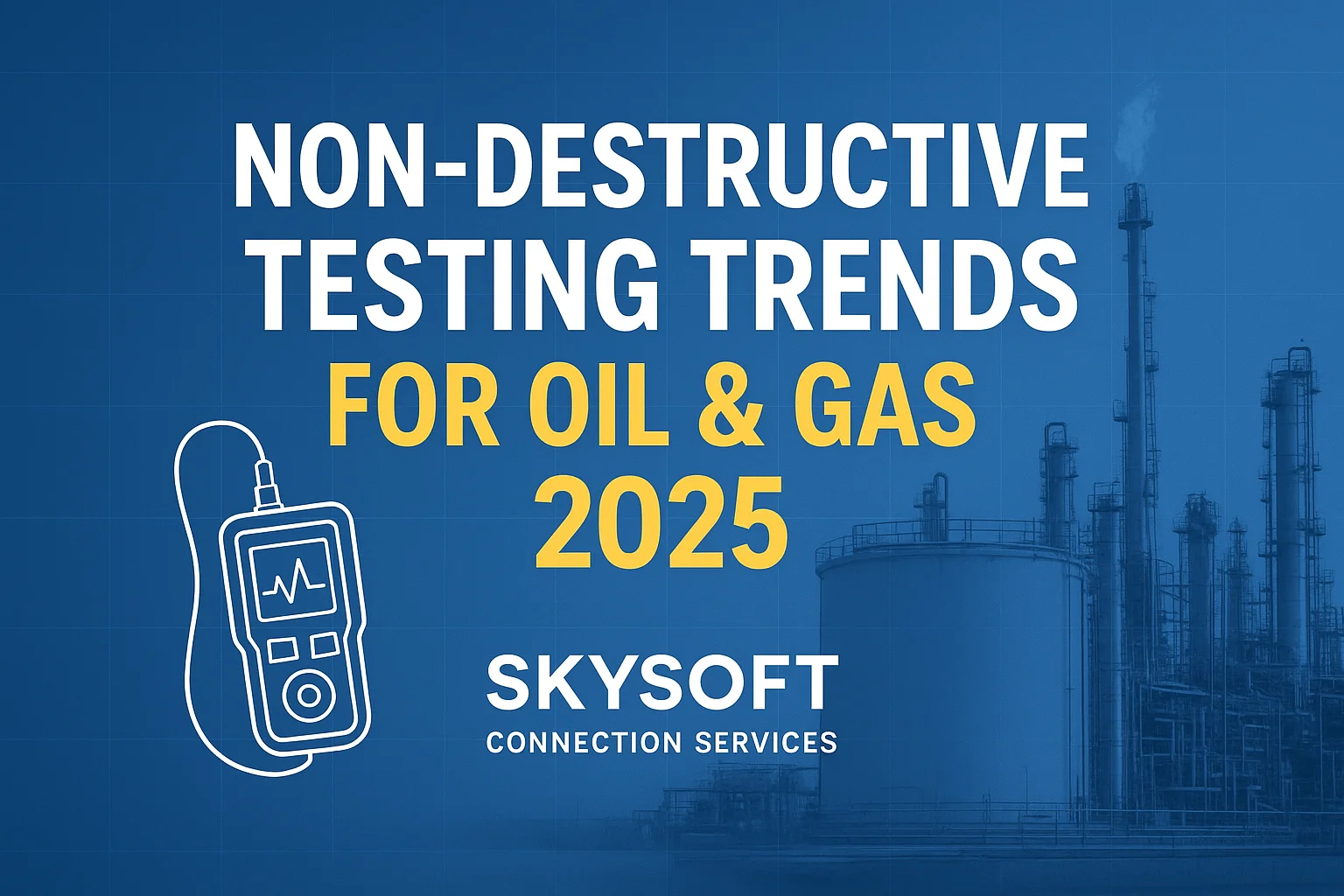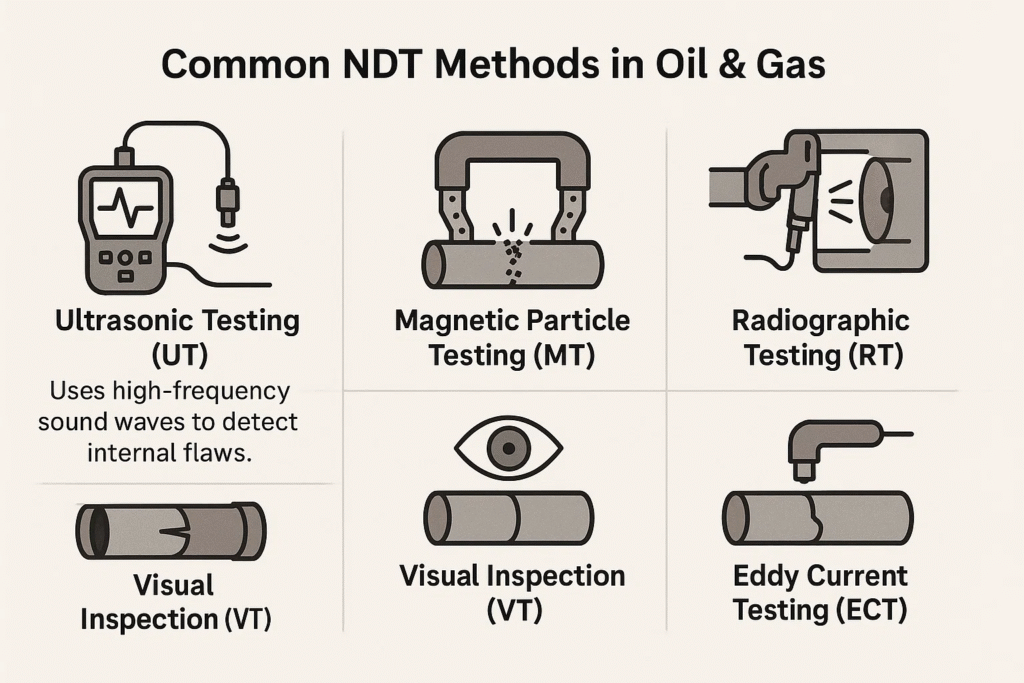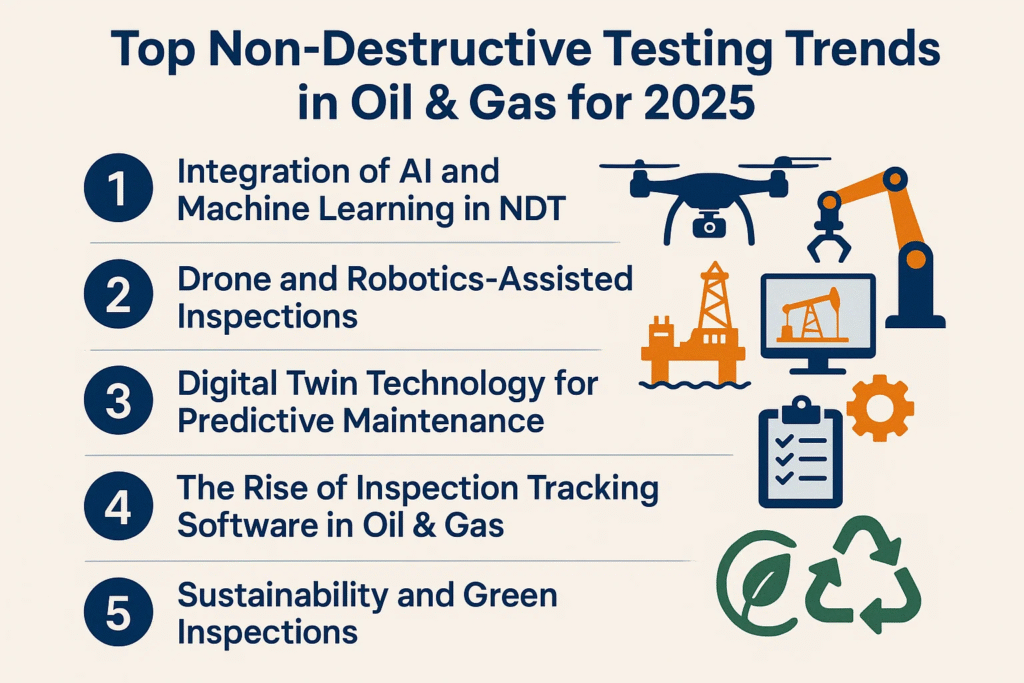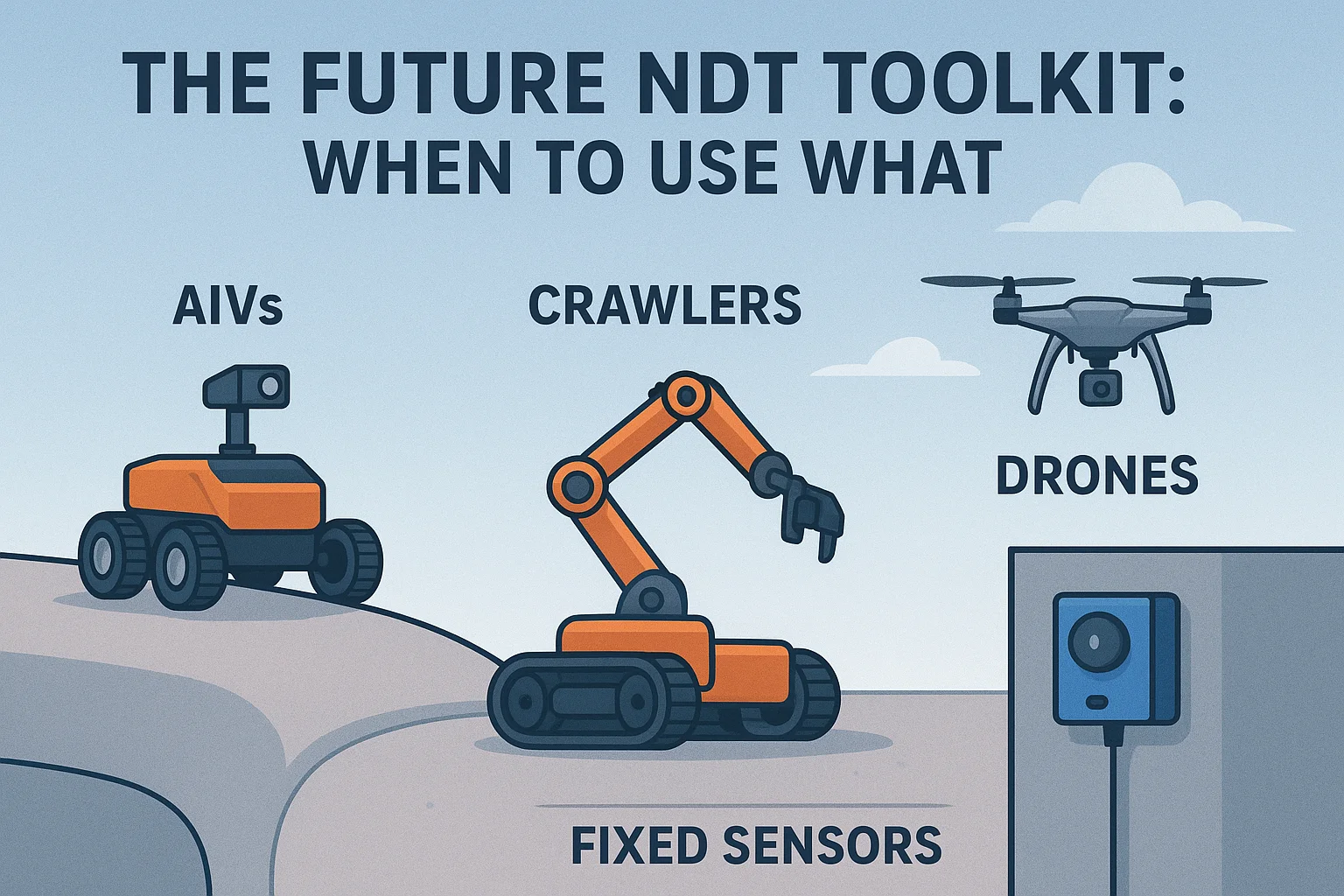Inspections Track Software For Oil and Gas Inspection Industry

The oil and gas industry is rapidly evolving, driven by innovation, sustainability goals, and digital transformation. In 2025, non-destructive testing (NDT) continues to play a critical role in ensuring safety, efficiency, and reliability across pipelines, rigs, refineries, and offshore platforms.
This article explores the latest NDT trends shaping the oil and gas sector in 2025 and how inspection tracking software is revolutionizing the way companies conduct and manage inspections.
Non-destructive testing (NDT) refers to a range of techniques used to evaluate materials, components, or systems without causing damage.
In oil and gas, NDT ensures that pipelines, pressure vessels, and structural assets remain safe and operational — all while preventing costly downtime or accidents.

| Trend | Description | Impact on Industry |
|---|---|---|
| AI-Powered Inspection Analytics | Artificial intelligence analyzes inspection data to detect early signs of corrosion or cracks. | Faster defect detection and predictive maintenance. |
| Drone-Based NDT | UAVs equipped with sensors and cameras perform inspections in hard-to-reach areas. | Reduces safety risks and inspection time. |
| Digital Twins | Real-time digital replicas of assets combine with NDT data for predictive maintenance. | Improves asset management and lifecycle planning. |
| Advanced Data Visualization | 3D modeling and dashboards enhance inspection reporting. | Better decision-making and collaboration. |
| Cloud-Based Inspection Software | Centralized platforms for inspection scheduling, data, and reporting. | Increases efficiency and compliance. |
Artificial Intelligence (AI) and Machine Learning (ML) are transforming data-driven inspections.
Modern NDT systems now use AI algorithms to:
These intelligent systems reduce human error, streamline operations, and improve inspection accuracy — essential for high-risk environments like offshore drilling or LNG terminals.
In 2025, drones and robotics are becoming the new norm for NDT in oil and gas.
They enable safe inspection of:
By using advanced imaging sensors, drones can collect real-time high-resolution data, eliminating the need for human entry into confined or hazardous spaces.
Digital twins are creating a digital revolution in oil and gas inspection.
By pairing real-world NDT data with virtual simulations, companies can:
This not only enhances safety but also reduces unplanned downtime and operational costs.
A major trend for 2025 is the adoption of inspection tracking software — a game-changer for asset management in the oil and gas industry.
✅ Centralized Data Management – Access all inspection reports in one place.
✅ Automated Scheduling – Plan inspections efficiently and avoid missed intervals.
✅ Digital Reporting – Generate real-time inspection and compliance reports.
✅ Regulatory Compliance – Stay aligned with industry safety standards (API, ISO, ASNT).
For example, Inspection Track Software helps oil and gas operators digitize inspection workflows, ensuring every NDT activity — from planning to reporting — is traceable, accurate, and compliant.
As the industry focuses on net-zero goals, NDT methods are evolving to support sustainability:
These innovations contribute to a safer and greener oil and gas ecosystem.

The oil and gas industry is under growing pressure to operate safely, efficiently, and sustainably.
Non-destructive testing not only safeguards infrastructure but also protects workers and the environment.
Looking ahead, NDT will continue to merge with AI, IoT, cloud computing, and predictive analytics.
Companies adopting inspection tracking software and digital NDT platforms will gain a competitive advantage through:
By 2030, the combination of smart sensors, drones, and data-driven insights will make oil and gas inspections more efficient and sustainable than ever before.
Read more : what is non destructive testing ndt
The year 2025 marks a turning point for non-destructive testing in the oil and gas sector.
As AI, robotics, and cloud-based inspection tools redefine the landscape, companies embracing inspection tracking software are setting new standards for safety, reliability, and efficiency.
In a world where every second and every drop of oil matters, digital transformation in NDT isn’t just an upgrade — it’s the future of intelligent asset management.
Read more : inspection methods for oil and gas storage tanks
In 2025, the major NDT trends include AI-powered analytics, drone-based inspections, digital twins, and cloud-based inspection tracking software that improve efficiency and safety.
Inspection tracking software helps oil and gas companies manage inspection schedules, reports, and compliance digitally — reducing manual errors and improving decision-making.
AI enhances NDT by automatically analyzing inspection data, predicting equipment failures, and reducing downtime through real-time insights and predictive maintenance.

Introduction: Why the Inspection Mindset Matters In modern oil and gas operations, safety cannot rely solely on checklists. While checklists ensure compliance, they rarely capture the deeper insights needed to prevent failures. Therefore, the real…

Introduction: The Evolving Landscape of NDT Non-Destructive Testing (NDT) has entered a new era one defined by automation, robotics, and real-time data intelligence. Traditional manual surveys still matter, yet modern inspection teams now rely on…
SkySoft Connections provides quality IT services around the globe. Our services begin with experience and end with dedication, ensuring innovation and reliability
© Copyrights, 2024 All Rights Reserved Skysoftconnections
Contact us
Get notified about new articles
Comment (1)
historical inspection data and automated reporting - inspectiontrack
Oct 14, 2025[…] read more : non destructive testing trends for oil gas 2025 […]
Comments are closed.